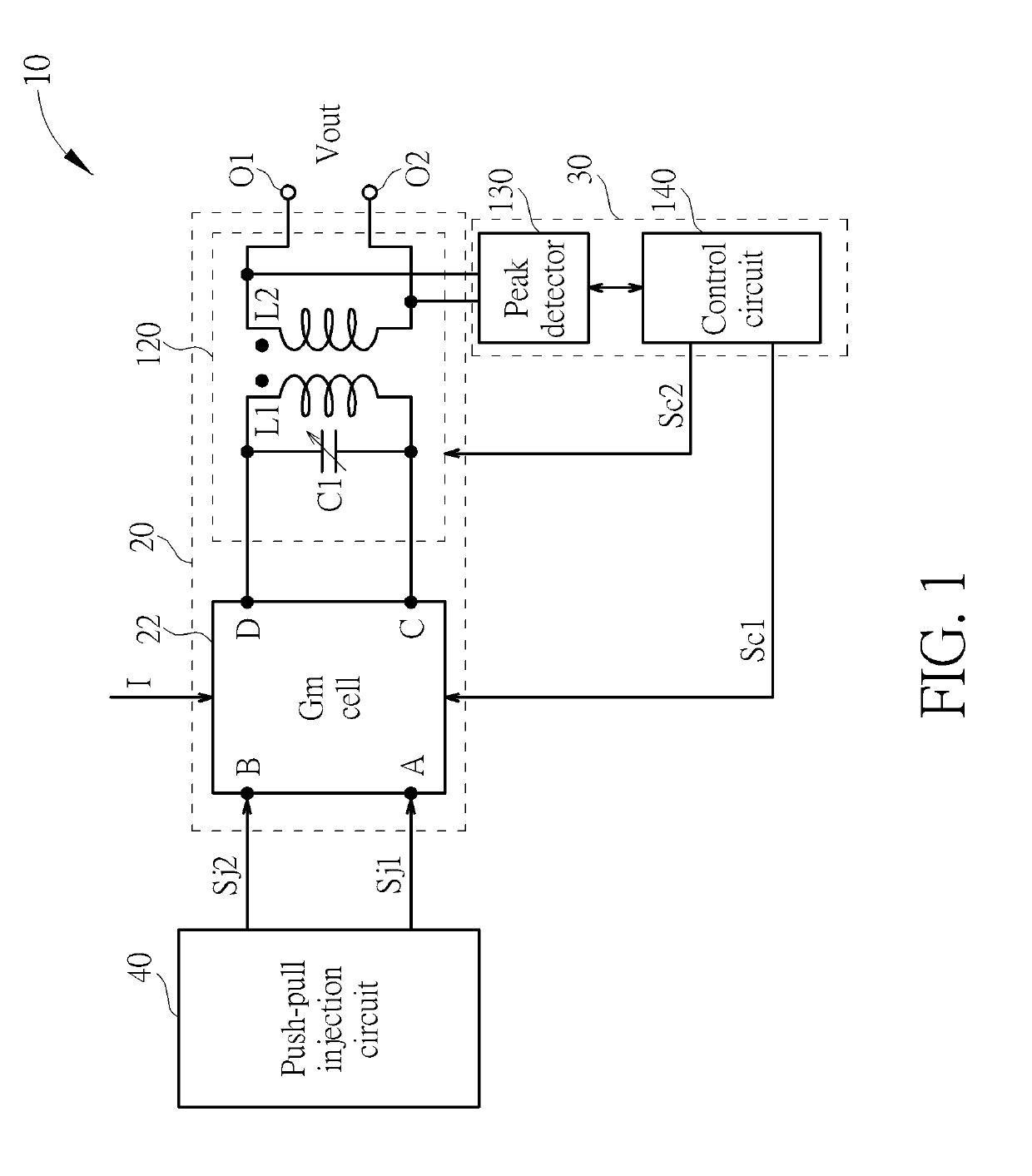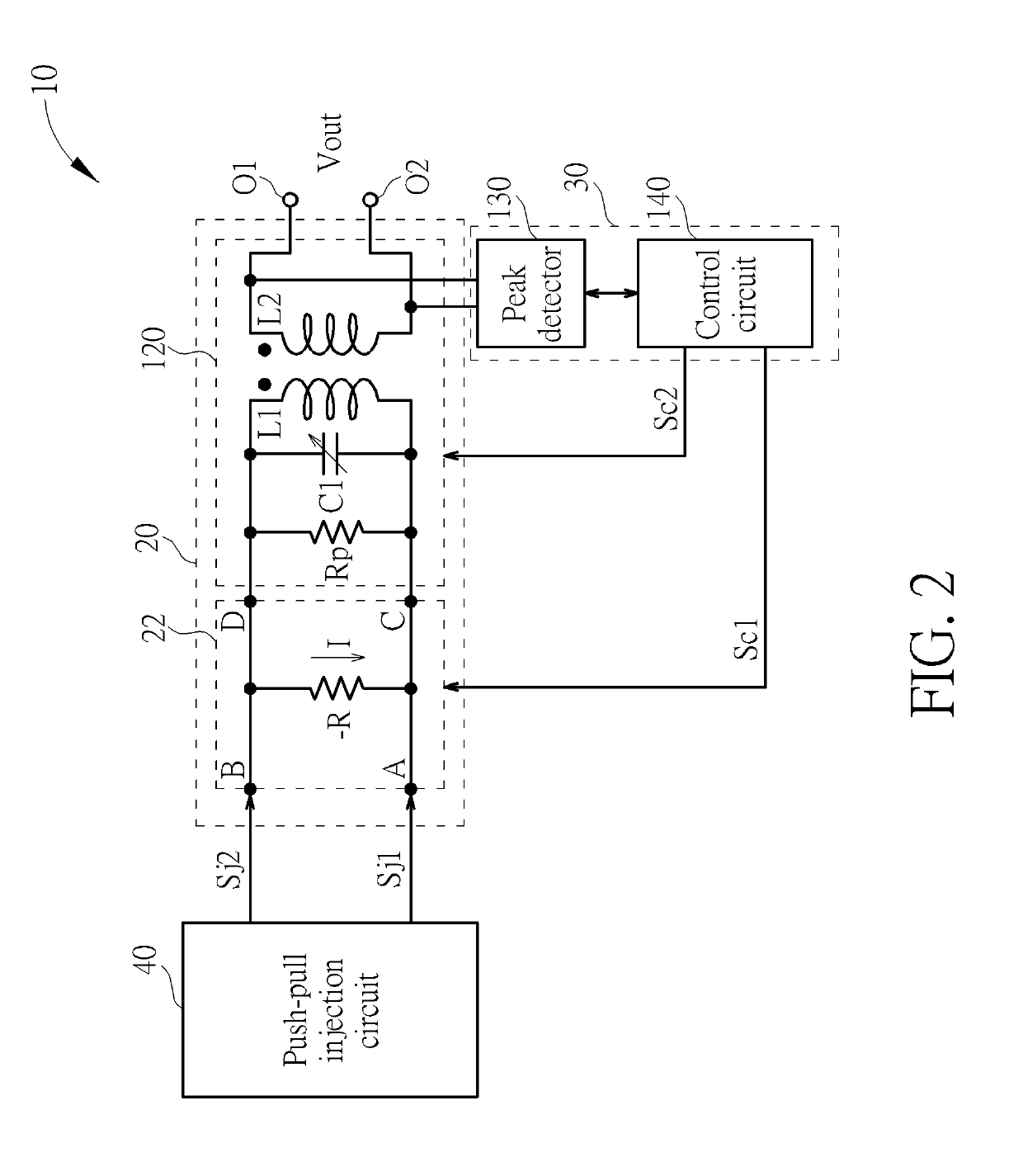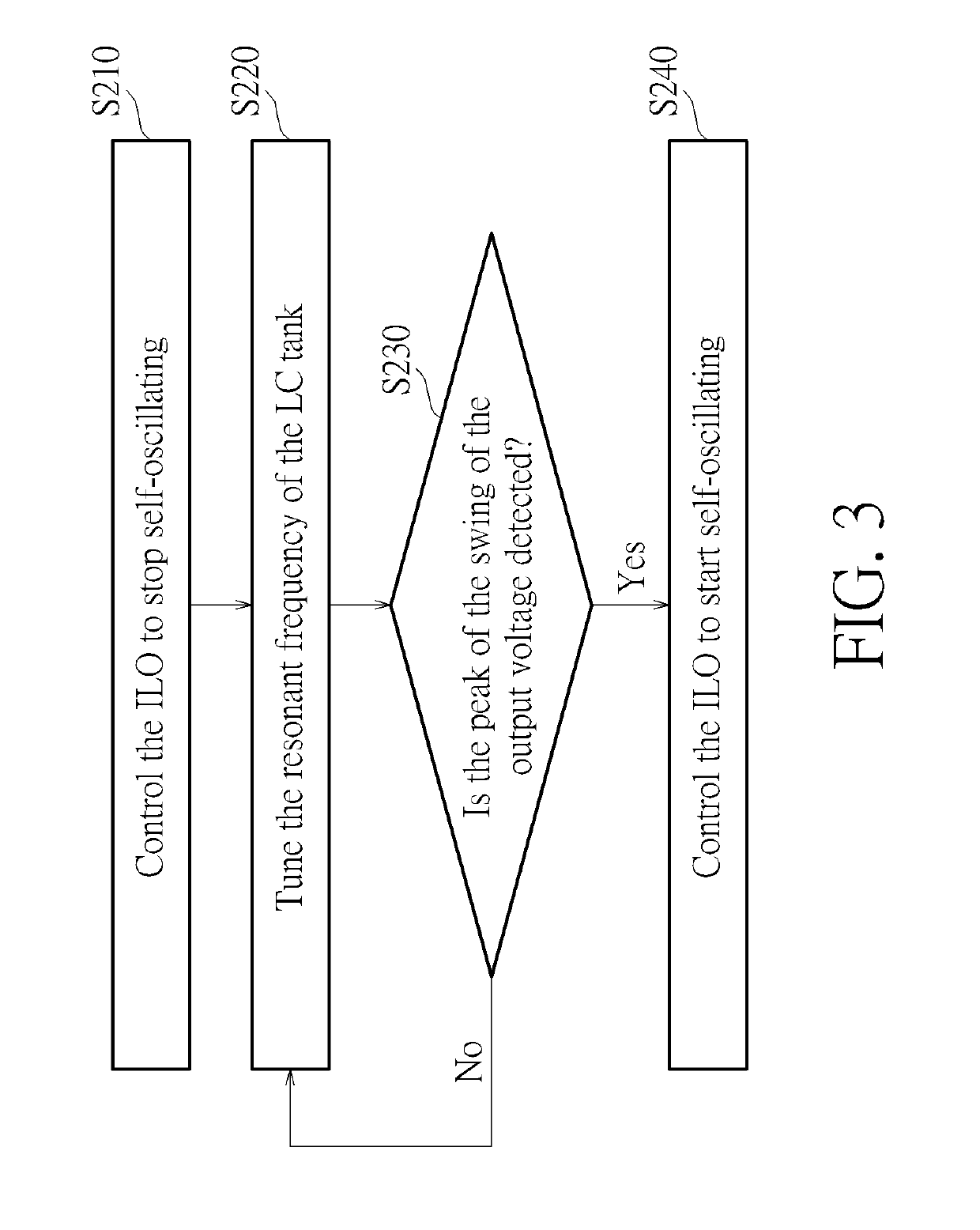Oscillating circuit and method for calibrating a resonant frequency of an LC tank of an injection-locked oscillator (ILO) of the oscillating circuit while stopping self-oscillation of the ILO
a technology of oscillating circuit and oscillating circuit, which is applied in the direction of diodes, instruments, amplifiers, etc., can solve the problems that ilos are generally inability to generate desirable oscillation frequencies, and achieve the effect of reducing the magnitude of negative resistan
- Summary
- Abstract
- Description
- Claims
- Application Information
AI Technical Summary
Benefits of technology
Problems solved by technology
Method used
Image
Examples
first embodiment
[0021]Please refer to FIG. 1 and FIG. 2. FIG. 1 is a schematic diagram of an oscillating circuit 10 according to the present invention. FIG. 2 is also a schematic diagram of the oscillating circuit 10 while a block of a Gm cell 22 of the oscillating circuit 10 shown in FIG. 1 is represented by an equivalent circuit of the Gm cell 22 in FIG. 2. The oscillating circuit 10 comprises an injection-locked oscillator (ILO) 20 and a calibration circuit 30. The ILO comprises a first node A, a second node B, the Gm cell 22, and an LC tank 120. The first node A receives a first injection signal Sj1, and the second node B receives a second injection signal Sj2. The first injection signal Sj1 and the second injection signal Sj2 are differential signals. In other words, the first injection signal Sj1 and the second injection signal Sj2 are complementary to each other. The LC tank 120 comprises a capacitor C1, a first inductor L1 and a second inductor L2. A first end of the first inductor L1 and a...
second embodiment
[0035]Please refer to FIG. 4. FIG. 4 is a circuit diagram of an oscillating circuit 100 according to the present invention. The main difference between the two oscillating circuits 10 and 100 is that the Gm cell 22 of the oscillating circuit 10 is implemented by a Gm cell 122 of the oscillating circuit 100. The Gm cell 122 is also used to provide the negative resistance −R between the first output end C and the second output end D. In the embodiment, the first output end C is directly coupled to the first node A, and the second output end D is directly coupled to the second node B. The Gm cell 122 comprises a first variable resistor Rv1, a pair 151 of P-type metal-oxide-semiconductor (PMOS) transistors Q31 and Q32, a second variable resistor Rv2, and a pair 152 of N-type metal-oxide-semiconductor (NMOS) transistors Q33 and Q34. A first end of the first variable resistor Rv1 is coupled to a first supply voltage VDD. The two PMOS transistors Q31 and Q32 are cross coupled. The source o...
third embodiment
[0039]Please refer to FIG. 5. FIG. 5 is a circuit diagram of an oscillating circuit 200 according to the present invention. The main difference between the two oscillating circuits 100 and 200 is that the oscillating circuit 200 further comprises a first push-pull injection circuit 210 and a second push-pull injection circuit 220. The first push-pull injection circuit 210 is configured to generate and output the first injection signal Sj1 to the first node A of the ILO 102, and the second push-pull injection circuit 220 is configured to generate and output the second injection signal Sj2 to the second node B of the ILO 102. Since the first injection signal Sj1 and the second injection signal Sj2 are two differential signals, a voltage level of the first node A is pushed up while a voltage level of the second node B is pulled down. The voltage level of the first node A is pulled down while the voltage level of the second node B is pushed up.
[0040]The first push-pull injection circuit...
PUM
 Login to View More
Login to View More Abstract
Description
Claims
Application Information
 Login to View More
Login to View More - R&D
- Intellectual Property
- Life Sciences
- Materials
- Tech Scout
- Unparalleled Data Quality
- Higher Quality Content
- 60% Fewer Hallucinations
Browse by: Latest US Patents, China's latest patents, Technical Efficacy Thesaurus, Application Domain, Technology Topic, Popular Technical Reports.
© 2025 PatSnap. All rights reserved.Legal|Privacy policy|Modern Slavery Act Transparency Statement|Sitemap|About US| Contact US: help@patsnap.com



